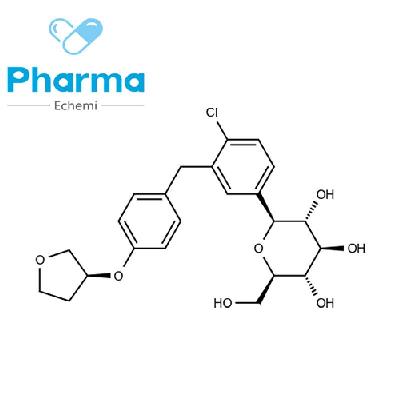-
Categories
-
Pharmaceutical Intermediates
-
Active Pharmaceutical Ingredients
-
Food Additives
- Industrial Coatings
- Agrochemicals
- Dyes and Pigments
- Surfactant
- Flavors and Fragrances
- Chemical Reagents
- Catalyst and Auxiliary
- Natural Products
- Inorganic Chemistry
-
Organic Chemistry
-
Biochemical Engineering
- Analytical Chemistry
-
Cosmetic Ingredient
- Water Treatment Chemical
-
Pharmaceutical Intermediates
Promotion
ECHEMI Mall
Wholesale
Weekly Price
Exhibition
News
-
Trade Service
Long-term complications of type 2 diabetes, including microvascular and cardiovascular disease, are responsible for
death and increased economic burden in most patients.
Clinical trials have shown that lowering blood glucose is beneficial
in delaying diabetes-specific microvascular complications.
In addition, some new hypoglycemic drugs have been shown to have beneficial effects
on cardiovascular and kidney disease.
The primary objective of a Comparative Effectiveness (GRADE) study was to compare the effectiveness
of four commonly used hypoglycemic drugs when used with metformin in achieving and maintaining glycaemic targets in people with recently onset type 2 diabetes.
These include insulin glargine U-100 (hereinafter referred to as glargine), sulfonylurea glimepiride, glucagon-like peptide-1 (GLP-1) receptor agonist liraglutide, and dipeptidyl peptidase 4 inhibitor sitagliptin
.
The study found that glargine and liraglutide were more effective than glimepiride and sitagliptin in maintaining blood sugar goals, although there was little difference in glycated hemoglobin levels over time (NEJM: Efficacy of Four 'Second-Line' Glucose Lowering Regimens PK!).
(insulin glargine, glimepiride, liraglutide and sitagliptin)).
This article will present the secondary outcomes of the study (microvascular complications and cardiovascular events and their risk factors) and heterogeneity
between subgroups.
Predetermined secondary outcomes associated with microvascular and cardiovascular disease included hypertension and dyslipidemia, moderate or severe proteinuria or estimated glomerular filtration rate less than 60 ml/min/1.
73 m2 body surface area, diabetic peripheral neuropathy as assessed using the Michigan Neuropathy Screener, and cardiovascular events (the overall outcome of major adverse cardiovascular events [MAE], hospitalization for heart failure, or any cardiovascular event) and death
.
The hazard ratios are expressed as 95% confidence intervals, which are not adjusted
for multiple comparisons.
At a mean follow-up of 5047 participants of 5.
0 years, no substantial differences were found between interventions in terms of development of hypertension or dyslipidemia or microvascular outcomes, with a mean overall incidence of 2.
6 for elevated moderate proteinuria, 1.
1 for increased severe proteinuria, 2.
9 for renal impairment, and 16.
7
for diabetic peripheral neuropathy.
Treatment groups did not differ
in MACE (overall incidence 1.
0), heart failure hospitalisation (0.
4), death from cardiovascular causes (0.
3), or all deaths (0.
6).
There was little difference in the incidence of any cardiovascular disease, with 1.
9, 1.
9, 1.
4, and 2.
0
in the groups of glargine, glimeride, liraglutide, and sitagliptin, respectively.
When the combined results of one treatment were compared with the combined results of the other three treatments, the cardiovascular disease risk ratios were 1.
1, 1.
1, 0.
7, and 1.
2
in the glargine group, glimepiride group, liraglutide group, and sitagliptin group, respectively.
Cardiovascular and mortality outcomes in intention-to-treat analysis
The current trial used a relatively effective method to examine four different hypoglycemic drugs
.
When choosing a treatment for type 2 diabetes, the different effects of these drugs on microvascular complications, cardiovascular risk factors, and cardiovascular outcomes and their effects
on blood glucose should be considered.
In this trial involving people with type 2 diabetes, there were no significant differences
in microvascular complications and mortality between the four treatment groups.
References: GRADE Study Research Group, Nathan DM, Lachin JM, et al.
Glycemia Reduction in Type 2 Diabetes - Microvascular and Cardiovascular Outcomes.
N Engl J Med.
2022 Sep 22; 387(12):1075-1088.
doi: 10.
1056/NEJMoa2200436.







